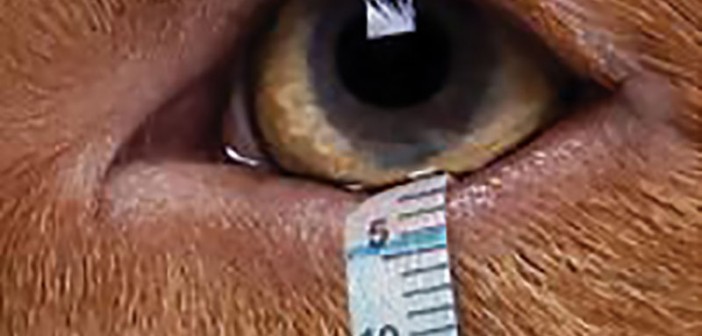Among the many remarkable and essential organs of the body, the eye is unique in that, in order to properly perform, its function it must be able to transmit light with almost no alteration. The cornea of the eye must remain crystal clear to do its job.
The cornea is the outer structure of the clear portion of the eyeball. Its specialized protein fibers are carefully arranged and organized to allow the transmission of light. The cells and tissues of the cornea do not receive nourishment form the blood because they lack blood vessels. Instead, the cornea receives nutrients and other needed factors from the tears.
Tears also play a vital role in protecting the eye. They flush particulate matter, such as dust and pollen and other irritants from the eye. They contain antibodies that protect the eye from viruses and bacteria. Tears also form a thin layer or film that clings to the cornea and keeps it from drying. This thin layer of tears is called the tear film.
Tears are produced in specialized glands called lacrimal glands. When the lacrimal glands fail to adequately produce tears, the normal defense mechanisms of the eye do not function properly, and the eye becomes irritated and inflamed. This condition is called Keratoconjunctivitis sicca (KCS) or dry eye. With severe KCS, the surface of the cornea often appears hazy and irregular and blood vessels will invade the cornea. If the problem has been long-standing, the cornea may also develop deposits of dark pigment. The conjunctiva or lining of the underside of the eyelids also becomes irritated and red, and the eye fills with thick mucus and pus.
WHAT CAUSES KCS
The most common cause of inadequate tear secretion is the infiltration of inflammatory cells from the immune system into the cells of the lacrimal gland. This is called immune-mediated KCS. While the exact cause is not known, something turns on the immune system to attack the lacrimal gland.
Other causes include dysfunction of the nerve that runs to the lacrimal gland (neurogenic KCS) and the rare side-effects of certain medications. KCS can also be a congenital condition in dogs when they are born with poor lacrimal gland function.
HOW IS KCS DIAGNOSED?
KCS is something that should be considered in any dogs with red, irritated eyes. It may affect one or both eyes. To measure tear production, a test called a Schirmer Tear Test is performed. The edge of a thin strip of paper is placed beneath the lower eyelid and held there for 60 seconds. The distance that tears wick up into the strip is then measured. Values greater than or equal to 15 millimeters are considered normal. Values less than 5mm indicate severe KCS, and those between five and 15 millimeters indicate moderate or borderline KCS.
HOW IS KCS TREATED?
The most important long-term treatment for KCS is to attempt to get the lacrimal gland to start adequate tear production. In most dogs, this can be done by administering eye drops that suppress the immune-mediated infiltration of the lacrimal gland. Cyclosporine and Tacrolimus are the drugs that are most commonly used. Until the lacrimal glands start to work again, tear replacement with drops that keep the eyes hydrated and lubricated is an important initial part of treatment for KCS as well.
Most dogs diagnosed with KCS also have secondary problems. Secondary bacterial infections and ulcerations of the cornea are common findings in dogs with KCS. These problems need to be treated appropriately along the KCS.
WHAT IS THE PROGNOSIS FOR DOGS WITH KCS?
Most dogs with immune-mediated KCS respond well to treatment. In most cases, the lacrimal gland will begin adequate tear production. However, treatment generally needs to be life-long, or the condition recurs.
In dogs with neurogenic KCS, the lacrimal gland will resume tear production only if the underlying neurologic problem can be treated. Many dogs with neurogenic KCS will need frequent application of lubricating eye drops for life.
Dogs that develop KCS as a side-effect of medication may resume normal tear production when the medication is stopped or may never resume normal tear production. These patients will also need frequent administration of lubricating eye drops.
An alternative treatment for dogs with KCS that do not respond to medical treatment is to surgically re-route the duct of a salivary gland into the eye. The saliva produced in the salivary gland substitutes for tears and keeps the eye hydrated and lubricated.
By: Jess Anderson, DVM
Dr. Anderson is a veterinarian at Timpanogos Animal Hospital in Pleasant Grove, Utah. His professional interests include dentistry, surgery, and internal medicine. Besides dogs, cats, horses and cattle, Dr. Anderson has worked with sheep, goats, llamas, alpacas, and pigs and even had one run-in with a water buffalo.




